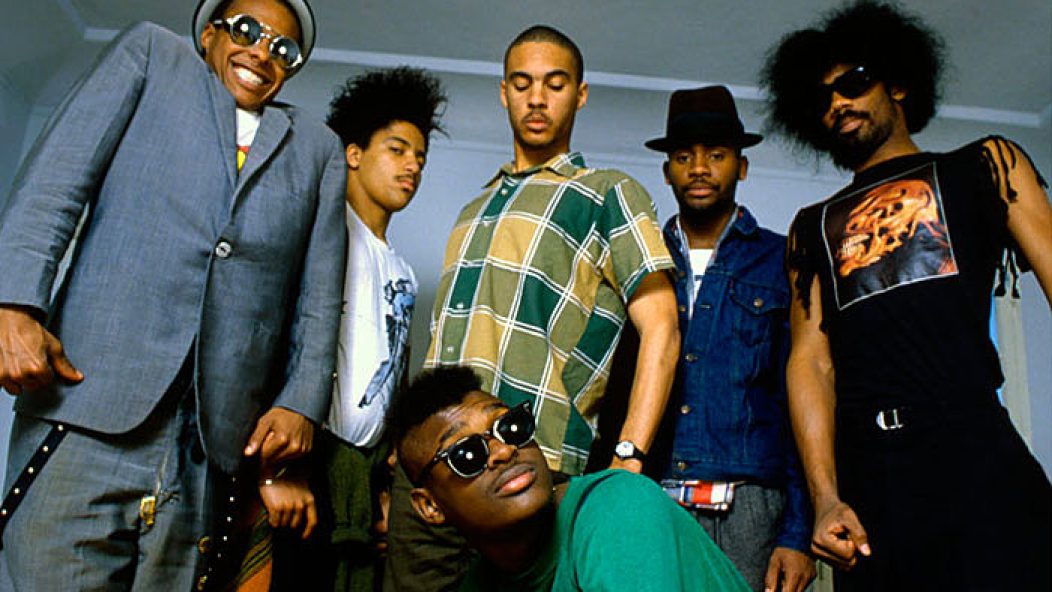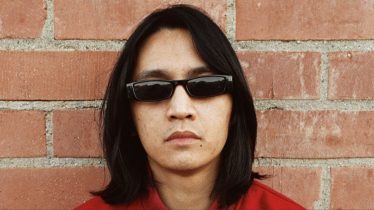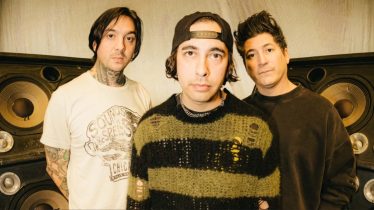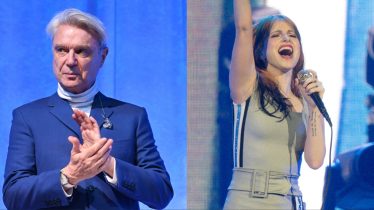
These 16 early Afro-Punk artists made huge contributions to alt-rock
The 2003 documentary Afro-Punk lifted the lid on how many black musicians and fans were part of punk culture. Yet even today, there persists the idea that black participation in rock music is some sort of novelty or anomaly.
That disregards, of course, mountains of evidence to the contrary, going back all the way to March 1951. Ike Turner (under the name Jackie Brenston & His Delta Cats) released “Rocket 88” pretty much inventing rock ’n’ roll. Punk and alternative are genres that have long been stereotypically white. However, the list of black innovators is long, distinguished and deserving of wider acknowledgment.
Read more: These groundbreaking black artists helped move the underground forward
Some names you know, or should. What would the history of alternative music possibly look and sound like without Prince? How many ’80s stars owe their careers in large part to producers Nile Rodgers and Bernard Edwards of Chic? Can you count the number of punk, rock and metal bands launched in the massive wake of Living Colour? Founder Vernon Reid put African-American rock on the map with his groundbreaking Black Rock Coalition.
No one list can capture all the ways black musicians helped shape punk and alternative culture over the decades. The Afro-Punk list that follows is a start, at least. Listen, learn… and then listen and learn some more.
Death – “Politicians In My Eyes” (1975)
Here’s one of the most improbable resurrections of all time. Death were Bobby, David and Dennis Hackney, who started playing music after seeing the Beatles on The Ed Sullivan Show. The three Detroit brothers switched their style from R&B to rock when the Who blew their minds. Death created a link between garage rock and punk with their 1975 single, “Politicians In My Eyes.” They put it out themselves after a Columbia Records executive couldn’t convince them to change their name. (It was a tribute to their father, who had died in an accident. The brothers wanted to put a positive spin on the tragedy and the word “death.”)
After decades of near obscurity, Death were rediscovered in 2009. The trio’s lone existing album was released on Drag City, and the band reformed with Lambsbread guitarist Bobbie Duncan replacing David, who died in 2000. The album N.E.W. appeared in 2015, and the “life-after-death” puns were both irresistible and warranted.
Read more: 10 new songs from black artists who should already be on your playlists
X-Ray Spex – “Oh Bondage! Up Yours!” (1977)
It’s axiomatic that punk was a vehicle for reinvention. From the beginning, punk’s ranks were filled with repurposed rockers who’d shed their shag haircuts and flares. But was there ever an Afro-Punk who better represented pure innovation than Mari Elliott, aka the late Poly Styrene? Billboard deemed her “one of the least conventional frontpersons in rock history, male or female.” That might still be an understatement. In her trademark dental braces, Styrene took the Sex Pistols’ DIY challenge and thrillingly, memorably upped the ante.
Pure Hell – “These Boots Are Made For Walkin’” (1978)
West Philadelphia born and raised, the quartet Pure Hell aren’t just, in all likelihood, the first black punk band. (They beat Bad Brains, who cite them as an influence, to the punch.) They were also one of the first authentic American punk bands, period, moving to the Big Apple in 1975. But after a successful U.K. tour, the band fell out with manager Curtis Knight. Their lone album, Noise Addiction, didn’t see release until 2006. Lead vocalist Kenny “Stinker” Gordon described the band in its heyday as “four Jimi Hendrixes.” Their sizzling Afro-Punk cover of Nancy Sinatra’s “These Boots Are Made For Walkin’” supports that claim.
Read more: These 9 seriously underrated bands broke up entirely too soon
Barry Adamson (with Magazine) – “Shot By Both Sides” (1978)
One of the most brilliant and perpetually underrated characters in British music history is bassist Barry Adamson. The Moss Side native came to prominence as part of post-punk legends Magazine, whose spiraling debut single “Shot By Both Sides” also became their anthem. But Adamson would go on to play key roles in outfits as diverse as New Romantic hitmakers Visage and Nick Cave’s Birthday Party and Bad Seeds. He would then become a successful solo artist, soundtrack composer of renown (he scored David Lynch’s Lost Highway) photographer and filmmaker. A true renaissance man.
The Specials – “Concrete Jungle” (1979)
The 2 Tone movement that spawned Coventry’s the Specials is a virtual primer on how to blur musical and racial boundaries. The Selecter, the English Beat and the Bodysnatchers all boasted ethically diverse lineups that mashed up punk, pop, ska and reggae. But it also never lost sight of reality. “Concrete Jungle” might be the best example of how this music captured the exhilarating but scarifying tension of the times.
Bad Brains – “Pay To Cum” (1980)
If Washington, D.C.’s Bad Brains weren’t the first black punk band, they were, legendarily, the fastest punk band of any and all races. But they could also switch gears effortlessly to Rasta-centric reggae whenever they chose. The breakneck “Pay To Cum,” led by the precise riffing of guitarist Dr. Know, still packs such a pin-your-ears-back wallop that its 85-second duration seems almost merciful. Despite a soap-opera history and serious health scares, Bad Brains—now entering their sixth decade—persevere.
Read more: These 12 punk albums of 1981 are rich in sound and fury
ESG – “Moody” (1981)
The four Scroggins sisters (plus Tito Libran) wowed the music world on both sides of the Atlantic in the early ’80s. Their minimalist funk—hypnotic grooves mostly stripped down to their bass, drums and vocal chassis—became an underground sensation. When Factory Records impresario Tony Wilson signed them, it forged a crucial link between British new wave and American R&B. ESG’s rhythm tracks made them one of the most sampled acts of all time, and they returned to action in the new millennium to show the kids what they’d missed. Their debut single, “Moody,” still sounds as fresh and mysterious as it did when it was released.
Jean Beauvoir (with the Plasmatics) – “Squirm” (1981)
Bassist/guitarist Jean Beauvoir’s towering blond mohawk became as much of a visual trademark of the Plasmatics as frontwoman Wendy O. Williams’ gaffer-taped boobs. The New York punks-turned-metallers were best known for their live shows, where destruction was the name of the game. Beauvoir would exit the group after two albums and an EP. He went on to score the Sly Stallone action flick Cobra, and collaborate with artists as diverse as the Ramones, Bruce Springsteen and the late K-pop icon Jonghyun.
Fishbone – “Party At Ground Zero” (1985)
There were lots of apocalyptic anthems during the 1980s, but the eve of destruction never sounded better than it did on this debut single from Los Angeles collective Fishbone. The group pumped steroids into 2 Tone, adding hyperactive funk and equally manic humor. At their Afro-Punk peak, Fishbone were the rarest of bands. They could make you think, even while you were losing your mind in the pit and on the dance floor.
Read more: Patty Walters is engaged but wants you to support black organizations
Glorious Din – “Closely Watched Trains” (1987)
Possibly the most obscure and unlikely of all the acts on this list, Glorious Din were fronted by Sri Lankan native Eric Cope. He took his surname from post-punk icon Julian Cope of the Teardrop Explodes and his musical inspiration from bands such as Joy Division and the Cure. The short-lived band self-released a pair of albums that seem both of their time and completely out of it.
A.R. Kane – “Baby Milk Snatcher” (1988)
A.R. Kane encompassed delicate shoegaze pop, subwoofer-rattling dub and avant jazz (sometimes all in the same song). The British duo of Alex Ayuli and Rudy Tambala created some of the most pioneering music of their era. The pair actually achieved U.S. chart success with 1987’s “Pump Up The Volume” by teaming with the group Colourbox to form the one-off group M.A.R.R.S. But their Afro-Punk legacy really rests on the work they did as A.R. Kane in the late ’80s and ’90s. Perhaps the best way to think of them is as the Velvet Underground of their time: an act who inspired almost everyone who heard them to test boundaries, as well.
24-7 Spyz – “Grandma Dynamite” (1989)
Living Colour got lots of well-warranted press for their uncompromising yet accessible brand of black rock. Yet, they were far from the only band of their time to pursue this path. Memphis’ should-have-been-superstars Xavion were one example, and the South Bronx’s 24-7 Spyz—heard here on their ode to the wise and wonderful “Grandma Dynamite”—were another. The Spyz leavened their heaviness with hair-raising soul harmonies. Deserved commercial success didn’t quite follow, but like many of the Afro-Punk acts on this list, the Spyz are still active and potent.
Read more: These 14 punk albums of 1984 made the year heavier and meaner
King’s X – “Over My Head” (1989)
Speaking of success (and grandma references), one of the most durable, long-lived and best-loved bands featured here is King’s X, led by singer/bassist Doug Pinnick. Pioneers in the field of progressive metal, this power trio are celebrating their 40th anniversary this year. Over the years, Pinnick’s powerhouse vocals have brought life to lyrics that reference his own struggles with religion and acceptance. (He came out as gay in 1998.) “Over My Head,” from the band’s landmark 1989 concept album Gretchen Goes To Nebraska, is a perfect showcase of the group’s precision-tooled metal and gospel fervor.
The Veldt – “Soul In A Jar” (1994)
Taking their name from a dystopian Ray Bradbury short story, North Carolina brothers Daniel and Danny Chavis had to navigate a particularly fraught racial minefield in the late 1980s. Living Colour had opened the door for black rock bands—who sounded like Living Colour. That didn’t describe the Chavises, whose singular sound melded soul with shoegaze. They got the last laugh: The hypnotic, danceable “Soul In A Jar” became an underground hit, and today the Veldt are recognized and loved as true musical innovators.
Skunk Anansie – “Intellectualise My Blackness” (1995)
A multiracial Afro-Punk quartet from London led by the outspoken, skin-headed vocalist/guitarist Skin, Skunk Anansie were first lumped in with the mid-’90s Britrock movement. But Skin (aka Deborah Dyer) preferred “clit-rock,” which describes the feminist anger that fueled the band’s metallic attack. A fine example from the group’s debut album, Paranoid & Sunburnt, is “Intellectualise My Blackness,” which has typically tough words for a white-race explainer: “Don’t you ever try to lecturize me!”
Mike Ladd – “I’m Building A Bodacious Bodega For The Race War” (1997)
Over the past two decades, Boston’s Mike Ladd has consistently broken down barriers between a number of genres (hip-hop, jazz, ambient rock, musique concrete, spoken word) to forge one of the most fascinating and rewarding careers in music. It all started in 1997, with his debut, Easy Listening 4 Armageddon, whose contents somehow managed to live up exactly to their title. “I’m Building A Bodacious Bodega For The Race War” references The Iliad, Pol Pot and Snoop Dogg over a scratchy soundscape that could be the last thing you’ll ever hear on your TV before all stations sign off for good.







